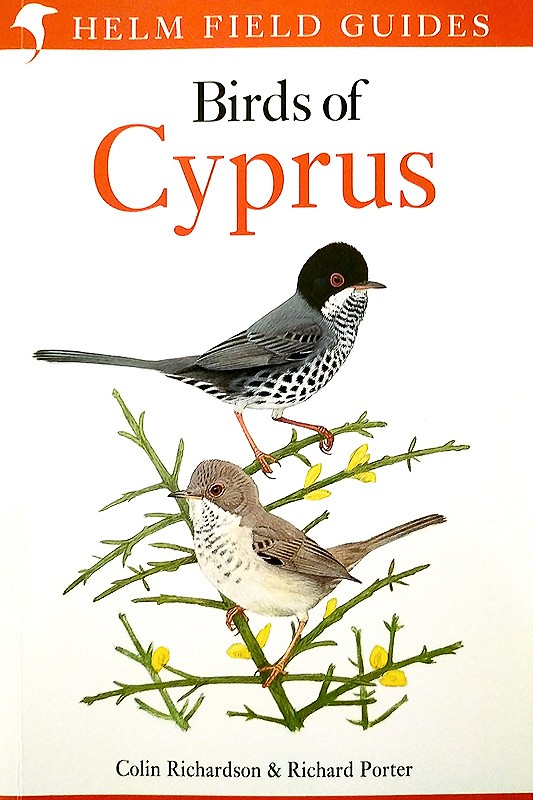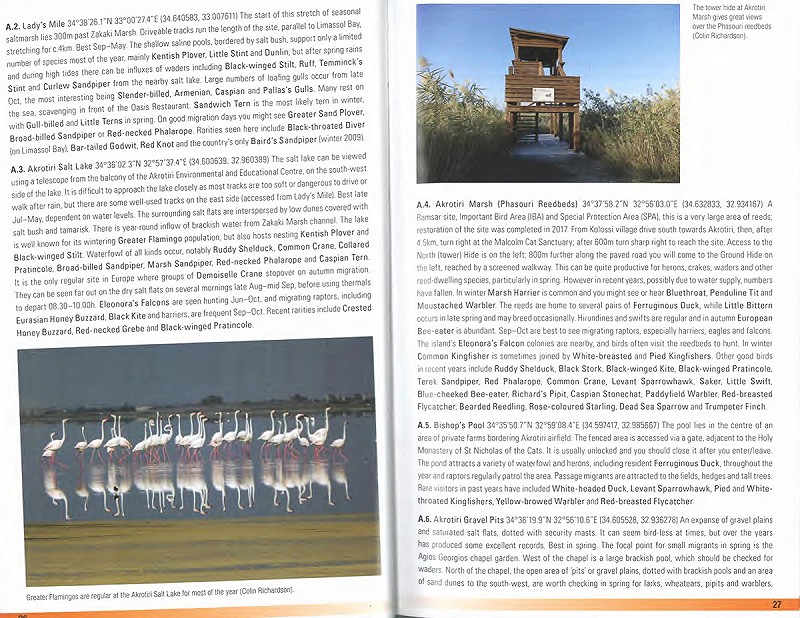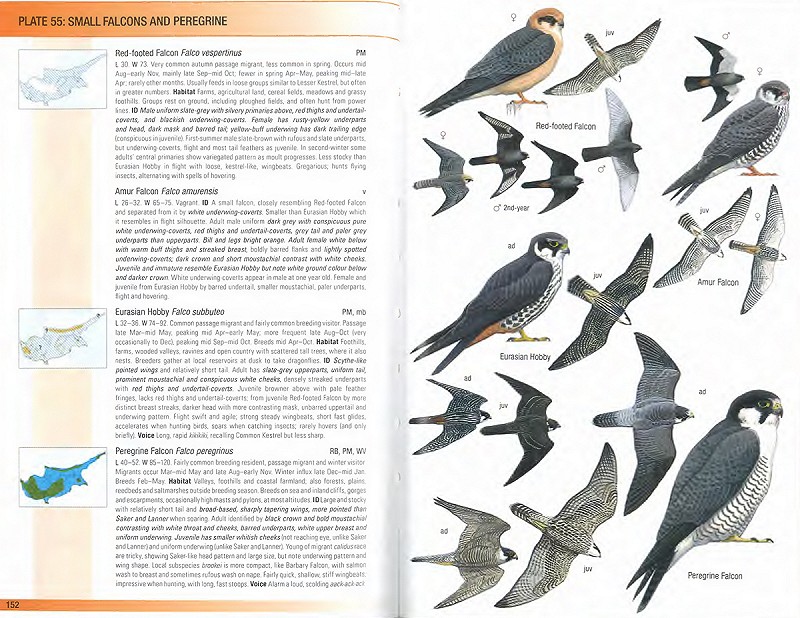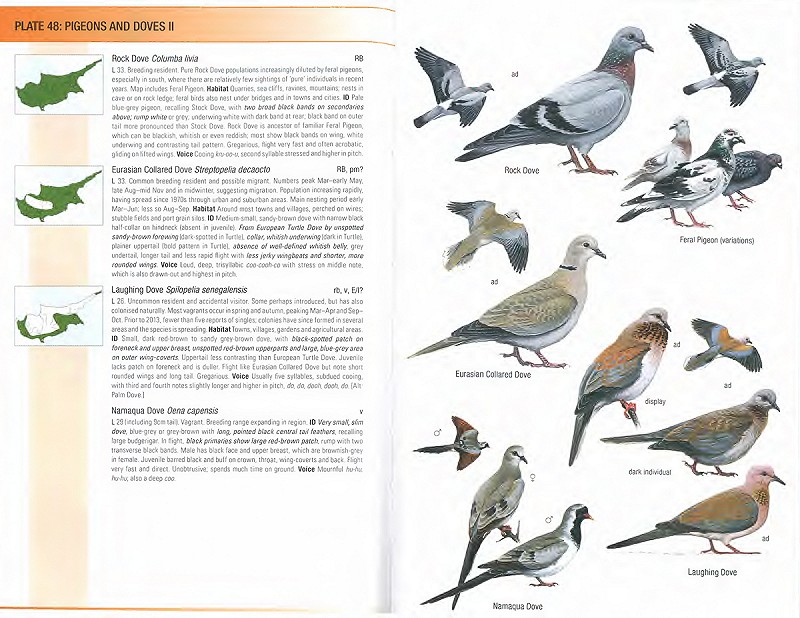Birds of Cyprus
1 March 2020 · Yoav Perlman · 3326 × bekeken
Colin Richardson & Richard Porter 2020. Christopher Helm/Bloomsbury, London. ISBN 978 1 4729 6084 9. Paperback, 256 pp., 26 colour photographs, 95 colour plates, many colour maps. Price: € 29,76.
This book continues the recent series of country guides by Helm, following Birds of Japan (Brazil, 2018) and Birds of Mongolia (Sundev & Leahy, 2020). It is another functional book, targeted at visitors to this wonderful birding holiday destination. It provides both a useful introduction to birding in Cyprus, and concise, up-to-date accounts of all bird species found in Cyprus. As such, this combination of field identification guide with a 'where to watch birds' guide has its pros and cons. On the pros side, it provides a visiting birder sufficient information for a successful trip to Cyprus, all in one fairly compact and lightweight book (216 x 140 x 12 mm, 460 gr; for comparison, Birds of Europe second edition, Svensson, Mullarney & Zetterström, 2009 is 192 x 133 x 25, 790 gr) that easily fits into a pocket or a day-pack. On the cons side, the compact design means that information might be somewhat basic, both in the 'where to watch birds' section, and in species accounts. 68 birding sites are described in 25 pages. Some sites are treated with a wealth of useful information and photographs. Inevitably, other sites are treated in lesser depth, especially those in Northern Cyprus.
The book opens with a standard and efficient introduction. It includes sections about taxonomy and nomenclature used in the book (IOC and OSME ORL), information about plates, text and maps, an interesting section about conservation, including explicit treatment of the major issue of the rampant illegal killing and poaching of wild birds in Cyprus, and the aforementioned section on birding sites in Cyprus. Regarding taxonomy and nomenclature, I want to point out the specific treatment of Cyprus Scops Owl Otus cyprius, one of the three endemic species of Cyprus. There is no global consensus on this split yet, including in OSME ORL and eBird/Clements. It is understandable why this book highlights Cyprus's three endemics (Cyprus Scops Owl, Cyprus Wheatear and Cyprus warbler), and its several endemic subspecies, some of them mooted as potential splits (cypriotes Coal Tit, glaszneri Eurasian Jay etc.). It is worth noting that the illustrations of Cyprus Scops Owl, of the endemic subspecies and few others are the rather few original drawings prepared for this book. Apart for these, most drawings were reproduced from Birds of the Middle East (Porter & Aspinall, 2010). This is, in my personal opinion, the major drawback of this book. The bulk of the book is occupied by colour plates, and these are of variable quality. Illustrations in Birds of the Middle East were done by John Gale, Mike Langman and Brian Small. Many illustrations in the second edition were used already in the first edition, published in 1996. In 2020, I think this does not work well, in a few cases. Some plates are brilliant, modern, accurate and fresh, e.g. Plate 55: Small falcons and Peregrine. However, some plates feel quite old-fashioned, with somewhat awkward proportions and low-quality colours, e.g. Plate 48: Pigeons and doves II. In modern birding literature, a standard high-quality of plates can be expected. Especially when the main competitor, Birds of Europe, offers higher wall-to-wall standard of illustrations, in my opinion. Further, no text annotations to the illustrations are provided – I find these very useful.
Main text is concise and seems accurate enough, though somewhat brief in a few accounts. Admittedly, I have not read through each and every text account, but my sample produced satisfactory results. It is interesting to note that generic sections (habitat, ID, voice) of some text accounts were copied-pasted from Birds of the Middle East, while others were apparently re-written for this book. Status descriptions of regular visitors and residents provide sufficient information. Maps are rather small (30 x 20 mm) but apparently do the job. It is obvious that the authors, Colin Richardson and Richard Porter, are extremely knowledgeable about the status and distribution of the birds of Cyprus.
To summarize, this is a practical book for any visiting birder to Cyprus. The combination of elaborate birding site descriptions, and good quality (on average) species accounts, makes this a good choice. Obviously, in today's era of digital birding tools, i.e. apps and eBooks, an 'old-school' hard copy often falls short in wealth and breadth of information. However, for travelling birders, and for those who still keep libraries and enjoy sifting through pages, this book certainly does the job, and I recommend it.
Yoav Perlman
Discussie
Gebruikers van het forum gaan akkoord met de forumregels.





